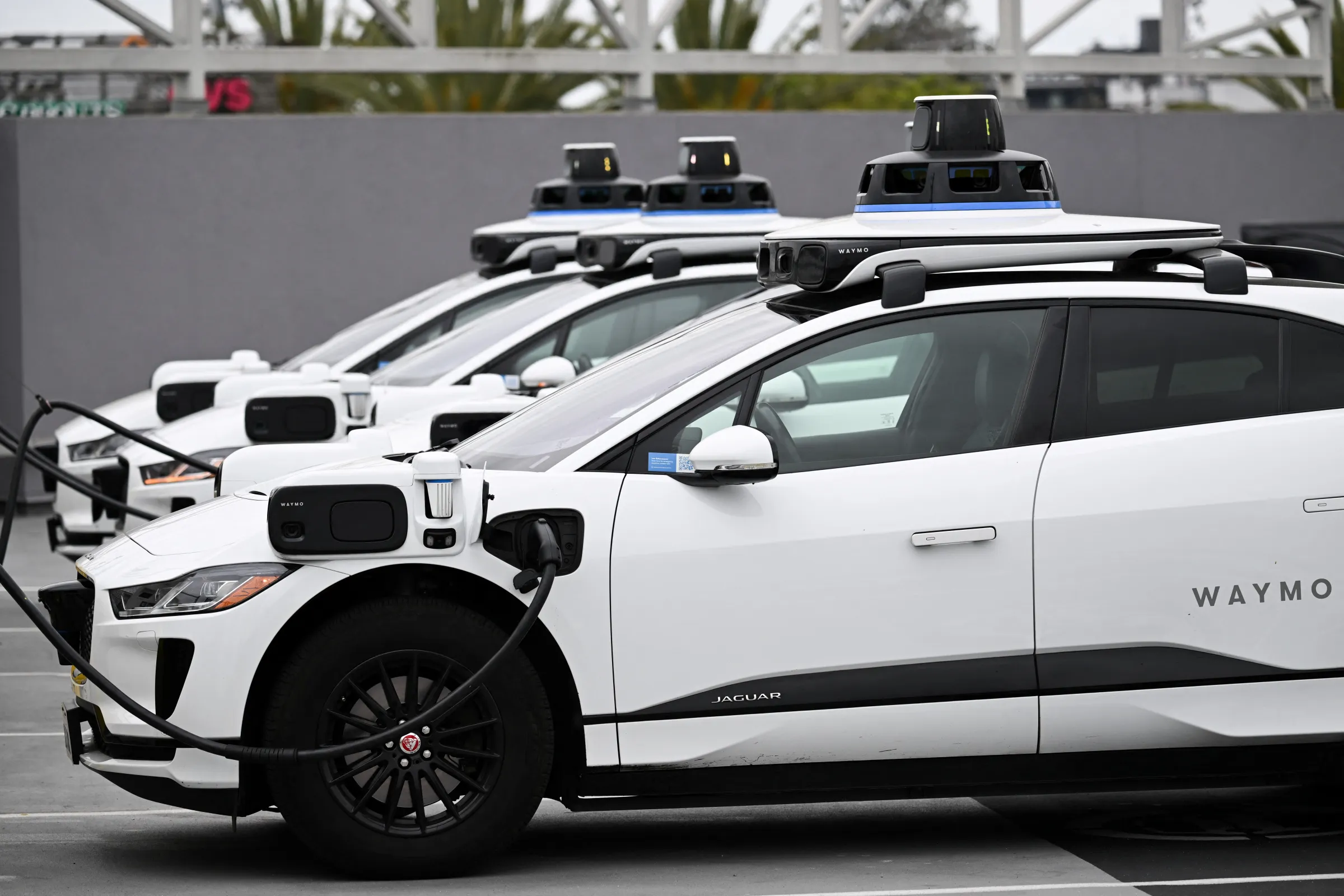
A Waymo autonomous vehicle was involved in a multi-car crash in Austin, Texas, raising questions about the safety and reliability of self-driving technology. The incident occurred in Central Austin and involved multiple vehicles, prompting investigations and renewed scrutiny of autonomous vehicle testing on public roads.
The collision serves as a stark reminder of the challenges and potential risks associated with the widespread deployment of autonomous vehicles. While proponents tout the potential for increased safety and efficiency, incidents like this underscore the need for rigorous testing, robust safety protocols, and ongoing evaluation of the technology’s performance in real-world conditions.
Details of the Austin Waymo Crash
Location and Timing
The multi-vehicle collision involving the Waymo autonomous vehicle took place in Central Austin. Specific details regarding the exact location and time of day are still under investigation, but the incident occurred on a public road, highlighting the interaction between autonomous vehicles and regular traffic.
Authorities are piecing together the sequence of events leading up to the crash, including factors such as traffic conditions, weather, and the actions of other drivers involved. The investigation aims to determine the precise cause of the collision and whether the autonomous vehicle’s systems performed as expected.
Vehicles Involved
The crash involved a Waymo autonomous vehicle and multiple other cars. The extent of damage to each vehicle varied, and the number of vehicles directly involved in the initial impact is a key aspect of the ongoing investigation.
Investigators are examining data from the Waymo vehicle’s sensors and onboard systems, as well as conducting interviews with witnesses and drivers of the other vehicles. This comprehensive approach is intended to provide a clear understanding of the circumstances surrounding the collision.
Initial Reports and Reactions
Initial reports of the crash quickly circulated on social media and news outlets, sparking widespread discussion about the safety of autonomous vehicles. Reactions ranged from concern about the technology’s reliability to calls for stricter regulation and oversight of autonomous vehicle testing.
Waymo has stated that they are cooperating fully with the investigation and are committed to ensuring the safety of their autonomous vehicles. The company is likely conducting its own internal review of the incident to identify any potential improvements to its technology or operational procedures.
The Investigation Process
Data Collection and Analysis
A thorough investigation is underway to determine the cause of the multi-car crash involving the Waymo autonomous vehicle. This process involves collecting data from various sources, including the vehicle’s sensors, cameras, and onboard computer systems.
Investigators are also analyzing data from the other vehicles involved in the collision, as well as interviewing witnesses and reviewing police reports. The goal is to reconstruct the events leading up to the crash and identify any contributing factors, such as driver error, mechanical failure, or software malfunction.
Role of Regulatory Agencies
Regulatory agencies, such as the National Highway Traffic Safety Administration (NHTSA), may also play a role in the investigation. These agencies have the authority to investigate potential safety defects in vehicles and can issue recalls if necessary.
The involvement of regulatory agencies underscores the seriousness of the incident and the potential implications for the future of autonomous vehicle technology. Their findings could lead to changes in regulations, testing protocols, or vehicle design.
Potential Outcomes of the Investigation
The outcome of the investigation could have significant consequences for Waymo and the broader autonomous vehicle industry. If the investigation reveals that the autonomous vehicle was at fault, it could lead to reputational damage, financial penalties, and stricter regulations.
Conversely, if the investigation finds that the autonomous vehicle was not at fault, it could help to reassure the public about the safety of the technology and pave the way for wider adoption. Regardless of the outcome, the investigation will provide valuable insights into the challenges and opportunities associated with autonomous vehicles.
Broader Implications for Autonomous Vehicle Technology
Impact on Public Perception
Incidents like the multi-car crash in Austin can significantly impact public perception of autonomous vehicle technology. Even if the autonomous vehicle is not found to be at fault, the crash can raise concerns about the safety and reliability of the technology.
Building public trust in autonomous vehicles is crucial for their widespread adoption. This requires transparency, rigorous testing, and a commitment to safety from both manufacturers and regulators.
Regulatory and Legal Considerations
The crash also raises important regulatory and legal considerations. Current regulations governing autonomous vehicles vary widely from state to state, and there is a lack of clear legal frameworks for determining liability in the event of an accident.
As autonomous vehicle technology continues to evolve, it will be necessary to develop comprehensive regulatory and legal frameworks that address issues such as safety standards, data privacy, and liability. This will require collaboration between policymakers, industry stakeholders, and the public.
The Future of Autonomous Vehicles
Despite the challenges and setbacks, the future of autonomous vehicles remains promising. The technology has the potential to revolutionize transportation, reduce accidents, and improve mobility for people with disabilities.
However, realizing this potential will require a continued focus on safety, rigorous testing, and a willingness to learn from incidents like the multi-car crash in Austin. It will also require ongoing dialogue and collaboration between all stakeholders to ensure that autonomous vehicles are developed and deployed in a responsible and ethical manner.
Damaged vehicles after a Waymo autonomous vehicle was involved in a multi-car crash in Central Austin.
Waymo’s Response and Safety Record
Company Statement and Cooperation
Following the incident, Waymo issued a statement expressing their commitment to safety and confirming their cooperation with the ongoing investigation. The company emphasized that they are working closely with local authorities to provide all necessary information and support.
Waymo’s proactive approach to the investigation aims to demonstrate their commitment to transparency and accountability. The company understands the importance of addressing public concerns and maintaining trust in their autonomous vehicle technology.
Waymo’s Safety Protocols
Waymo has invested heavily in developing robust safety protocols for its autonomous vehicles. These protocols include extensive testing in both simulated and real-world environments, as well as redundant safety systems designed to mitigate potential risks.
The company’s safety protocols also include rigorous training for its safety drivers, who are responsible for monitoring the vehicle’s performance and intervening if necessary. Waymo continuously evaluates and updates its safety protocols based on data collected from its testing and operations.
Past Safety Performance
Waymo has accumulated millions of miles of autonomous driving experience, both in simulation and on public roads. The company’s data suggests that its autonomous vehicles have a lower accident rate than human-driven vehicles.
However, it is important to note that comparing accident rates between autonomous and human-driven vehicles is complex, as the conditions under which they operate can vary significantly. Additionally, the definition of an “accident” can also differ, making direct comparisons challenging.
You can find more details about the incident from local news coverage.
Public Reaction and Debate
Social Media Discussion
The multi-car crash involving the Waymo autonomous vehicle sparked a flurry of discussion on social media platforms. Many users expressed concerns about the safety of autonomous vehicles, while others defended the technology and highlighted its potential benefits.
The social media debate reflects the broader public discourse surrounding autonomous vehicles, which is often characterized by a mix of excitement, skepticism, and fear. Understanding these diverse perspectives is crucial for fostering informed discussions and shaping public policy.
Expert Opinions
Experts in the fields of transportation, technology, and ethics have weighed in on the incident, offering a range of perspectives on the implications for autonomous vehicle technology. Some experts have called for a more cautious approach to deployment, while others have emphasized the need to continue investing in research and development.
The expert opinions highlight the complexity of the issues surrounding autonomous vehicles and the need for a multidisciplinary approach to addressing them. This includes considering not only the technical aspects of the technology but also the social, economic, and ethical implications.
Ethical Considerations
The crash raises important ethical considerations about the use of autonomous vehicles. One key question is how autonomous vehicles should be programmed to make decisions in unavoidable accident scenarios.
Another ethical consideration is the potential impact of autonomous vehicles on employment. As autonomous vehicles become more widespread, they could displace millions of professional drivers, raising concerns about job losses and economic inequality. Addressing these ethical considerations is essential for ensuring that autonomous vehicles are developed and deployed in a way that benefits society as a whole.
Key Takeaways:
- A Waymo autonomous vehicle was involved in a multi-car crash in Central Austin.
- The incident is under investigation to determine the cause and contributing factors.
- The crash raises questions about the safety and reliability of self-driving technology.
- Public perception and regulatory frameworks are crucial for the future of autonomous vehicles.
- Waymo is cooperating with the investigation and emphasizes its commitment to safety.
FAQ:
What happened in the Waymo crash in Austin?
A Waymo autonomous vehicle was involved in a multi-car collision in Central Austin, Texas. The incident is currently under investigation to determine the cause and contributing factors.
Who is investigating the Waymo crash?
Local authorities are conducting the initial investigation. Regulatory agencies like the National Highway Traffic Safety Administration (NHTSA) may also become involved.
What is Waymo’s response to the crash?
Waymo has stated that they are cooperating fully with the investigation and are committed to ensuring the safety of their autonomous vehicles. They are conducting their own internal review as well.
What are the potential consequences of the investigation?
The outcome of the investigation could have significant consequences for Waymo and the broader autonomous vehicle industry, potentially leading to reputational damage, financial penalties, or changes in regulations.
How might this affect the future of autonomous vehicles?
This incident could impact public perception and influence the development of regulatory and legal frameworks for autonomous vehicles. It underscores the need for continued focus on safety and rigorous testing.
What are some ethical considerations related to autonomous vehicles?
Ethical considerations include how autonomous vehicles should be programmed to make decisions in unavoidable accident scenarios and the potential impact on employment due to the displacement of professional drivers.
What safety measures does Waymo have in place?
Waymo has invested in safety protocols, including extensive testing in simulated and real-world environments, redundant safety systems, and rigorous training for safety drivers.
Where can I find more information about the crash?
You can find more information about the crash in local news reports and official statements from Waymo.
The multi-car crash involving a Waymo autonomous vehicle in Austin serves as a critical reminder of the complexities and challenges inherent in the development and deployment of self-driving technology. While autonomous vehicles hold immense potential to transform transportation and improve safety, incidents like this underscore the need for continued vigilance, rigorous testing, and a commitment to addressing the ethical and societal implications of this rapidly evolving technology. As investigations continue, it’s crucial to stay informed and engage in constructive dialogue about the future of autonomous vehicles and their role in our society. Consider researching the current regulations surrounding autonomous vehicle testing in your state or region to better understand the legal landscape.

